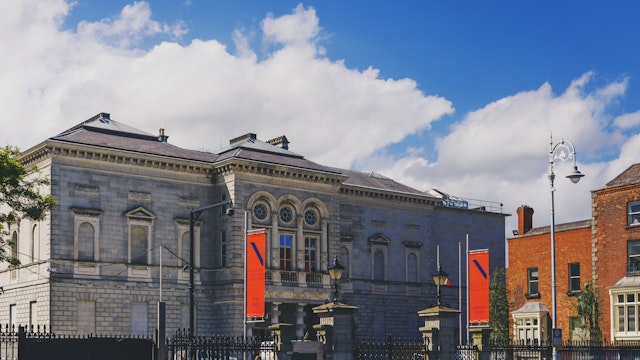A magnificent Caravaggio and a breathtaking collection of works by Jack B Yeats – William Butler Yeats' younger brother – are the main reasons to visit the National Gallery, but certainly not the only ones. Its excellent collection is strong in Irish art, and there are also high-quality collections of every major European school of painting.
What's inside
Spread about its four wings you'll find: works by Rembrandt and his circle; a Spanish collection with paintings by El Greco, Goya and Picasso; and a well-represented display of Italian works dating from the early Renaissance to the 18th century. Fra Angelico, Titian and Tintoretto are among the artists represented, but the highlight is undoubtedly Caravaggio's The Taking of Christ (1602), which lay for over 60 years in a Jesuit house on Leeson Street and was accidentally discovered by chief curator Sergio Benedetti.
The ground floor displays the gallery's fine Irish collection, plus a smaller British collection, with works by Reynolds, Hogarth, Gainsborough, Landseer and Turner. Absolutely unmissable is the Yeats Collection at the back of the gallery, displaying more than 30 works by Irish impressionist Jack B Yeats (1871–1957), Ireland's most important 20th-century painter.
Entrance is via the light-filled modern Millennium Wing on Clare Street or the refurbished entrance on Merrion Square West. Here you'll also find a small collection of 20th-century Irish art, high-profile visiting collections (for which there are admission charges), an art reference library, a lecture theatre, a good bookshop and Fitzer's Café.
Insider tips
In order to protect FW Burton's gorgeous watercolor, Hellelil and Hildebrand, the Meeting on the Turret Stairs (1864) from too much light exposure, it is only displayed twice a week in Room 20, for an hour at a time on Thursdays at 5.30pm and Sundays at 2pm.
The best time to visit the gallery is Thursday evening, when it's open late and there are fewer visitors.
There are family workshops for kids to try their hand at art throughout the year, usually on Saturdays; check the gallery website for details.
Tours, tickets and accessibility
There are free tours at 6.30pm Thursday, 12.30pm Saturday and at 11.30am, 12.30pm and 1.30pm on Sunday. The gallery also has a free Masterpieces app (available for both Android and iPhone) featuring 80% of its collection.
Wheelchairs and stools are available free of charge at the cloakrooms. Entrances on Merrion Square West and Clare Street are accessible for buggies and wheelchair users and people with reduced mobility. Lifts provide access to all levels of the gallery.
Visitors who are deaf or are hard of hearing can avail of hearing induction loops. The National Gallery also hosts tours with listening devices and Irish Sign Language tours.
Visitors with assistance dogs are welcome to the gallery, dog bowls with water are available from the Information desks. Free audio guides, magnifying glasses and large text booklets are available for adults and children.
How to get there
Dublin Bus numbers 4, 7, 8, 39A and 46A will lead you there from the city centre.
What's nearby?
Drop into Doheny & Nesbitt's for a post-gallery pint. For food, try Tiller & Grain or Allta (book ahead). Both Trinity College and Merrion Square park are a two-minute walk away, and you're just a stone's throw from the Natural Museum of Ireland.



